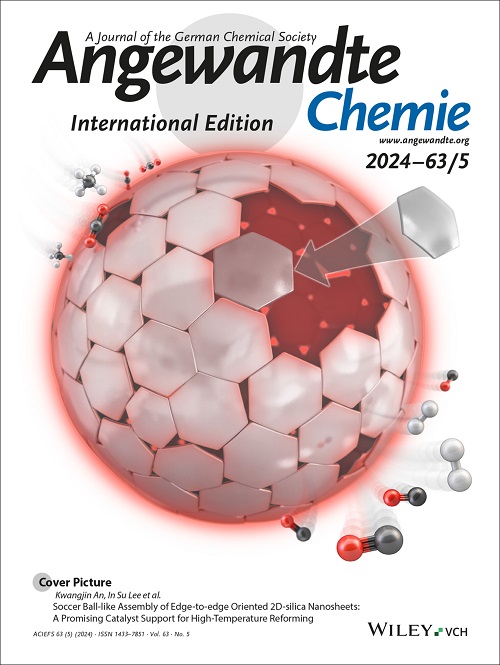Local Electric Field Microenvironment‐Induced Dynamic Spatial Confinement to Stabilize I+ towards High‐Mass‐Loading and Stable Zinc‐Iodine Batteries
IF 16.1
1区 化学
Q1 CHEMISTRY, MULTIDISCIPLINARY
引用次数: 0
Abstract
Four‐electron iodine conversion chemistry (I‐/I2/I+) endows zinc‐iodine batteries with competitive energy density. The stability of I+ conversion relies on its interaction with sufficient nucleophilic species (e.g., Cl‐, Br‐). However, under high iodine loading, nucleophilic species fail to afford sufficient coordination strength and number within thick iodine cathode to stabilize I+, thus compromising the high‐voltage plateau and capacity. Here, we effectively spatially confine nucleophilic species (Cl‐) on the cathode by ‐C‐N+‐induced localized electric field microenvironment in polyquaternary ammonium iodide (PDDA‐I). Spatial confinement maximizes Cl‐ concentration on the cathode ensuring highly reversible I0/I+ conversion, even in the low‐concentrated ZnCl2 addition and high iodine loading. Importantly, the dynamically regulated Cl‐ maintains a balance with iodine species at the ‐C‐N+ sites during cycling, effectively limiting the shuttling effect of polyiodides. Consequently, even adopting a high iodine loading of 16.03 mg cm‐2, the PDDA‐I still maintains a distinct four‐electron‐conversion dual voltage plateau with a remarkable capacity of 4.97 mAh cm‐2. An impressing lifespan of 10000 cycles is achieved at 12.6 mg cm‐2 with a capacity decay of 0.0012% per cycles, exceeding conventional iodine cathode by 20‐fold. This work provides an important reference for high‐performance four‐electron conversion zinc‐iodine batteries at high iodine loading.局部电场微环境诱导的动态空间约束稳定I+向高质量负载和稳定锌碘电池
四电子碘转化化学(I‐/I2/I+)使锌碘电池具有具有竞争力的能量密度。I+转化的稳定性依赖于它与足够的亲核物质(如Cl‐,Br‐)的相互作用。然而,在高碘负载下,亲核物质在厚碘阴极内无法提供足够的配位强度和配位数来稳定I+,从而影响了高压平台和容量。在此,我们利用- C - N+ -诱导的局域电场微环境,在阴极上有效地限制了亲核物质(Cl‐)。空间限制使阴极上的Cl -浓度最大化,即使在低浓度的ZnCl2添加和高碘负载下,也能确保高度可逆的I0/I+转换。重要的是,在循环过程中,动态调节的Cl -维持了- C - N+位点与碘的平衡,有效地限制了多碘化物的穿梭效应。因此,即使采用16.03 mg cm‐2的高碘负载,PDDA‐I仍然保持明显的四电子转换双电压平台,具有4.97 mAh cm‐2的显着容量。在12.6 mg cm - 2条件下实现了令人印象深刻的10000次循环寿命,每循环容量衰减0.0012%,超过传统碘阴极20倍。本研究为高碘负载下高性能四电子转换锌碘电池的研制提供了重要参考。
本文章由计算机程序翻译,如有差异,请以英文原文为准。
求助全文
约1分钟内获得全文
求助全文
来源期刊
CiteScore
26.60
自引率
6.60%
发文量
3549
审稿时长
1.5 months
期刊介绍:
Angewandte Chemie, a journal of the German Chemical Society (GDCh), maintains a leading position among scholarly journals in general chemistry with an impressive Impact Factor of 16.6 (2022 Journal Citation Reports, Clarivate, 2023). Published weekly in a reader-friendly format, it features new articles almost every day. Established in 1887, Angewandte Chemie is a prominent chemistry journal, offering a dynamic blend of Review-type articles, Highlights, Communications, and Research Articles on a weekly basis, making it unique in the field.

 求助内容:
求助内容: 应助结果提醒方式:
应助结果提醒方式:


